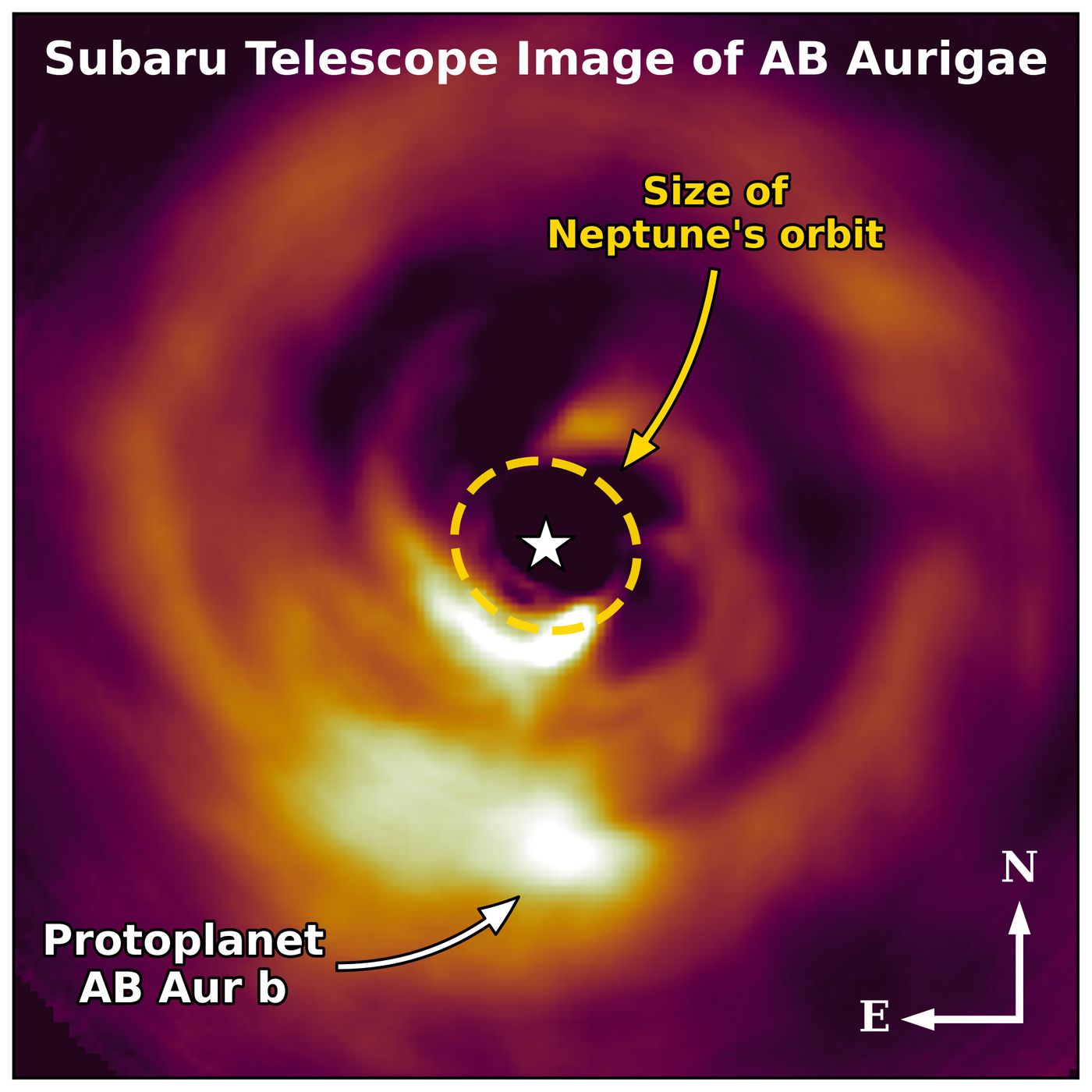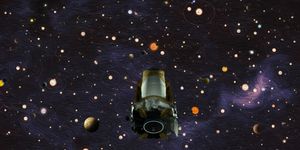Potential Gas Giant Exoplanet Spotted in Formation
The youngest exoplanet ever imaged may contradict a widely accepted theory of how gas giants form.
Discovered by a team of researchers led by astrophysicist Thayne Currie using the Subaru Telescope in Hawaii and the Hubble Telescope, the exoplanet is a gas giant estimated to be nine times the mass of Jupiter. The scientists said in their recently published Nature Astronomy paper, that the planet is still in its early stages of development but it may reveal important information about how gas giants form.
The exoplanet, named AB Aur B, lies in the AB Aurigae system, about 531.6 light-years from the Earth. AB Aurigae is young for a star, only 1-4 billion years old. The exoplanet itself was spotted in 2016 by Currie’s team at the National Astronomical Observatory of Japan, but it was unclear whether the abnormally bright location in the system was a new planet forming or reflected starlight, so they observed it with both telescopes for five years before concluding that it was, in fact, a planet being birthed.
There have been more than 5,000 exoplanets discovered, but none have ever been imaged in the act of being “born” until this AB Aur B. It’s far from its star, three times further than the distance between Neptune and our sun, and it seems to be forming from disk instability, a controversial theory of gas giant formation.
Disk instability is the process of gas collapsing on itself from its own gravity, which eventually forms a gas giant. This takes place within a protoplanetary disk, a disk made from 99% gas and 1% dust. The more commonly accepted theory of gas giant formation is through the creation of a dust and rock core. The core eventually becomes several times the size of Earth and then can accumulate gas around it, eventually forming a gas giant.
While the theory of AB Aur B’s formation is controversial, even AB Aur B’s existence is under speculation. Scientists from two other giant optical telescopes, Europe’s Very Large Telescope in Chile and the Large Binocular Telescope Observatory in Arizona, haven’t seen anything at the location. Additionally, Atacama Large Millimeter/submillimeter Array, a radio observatory in Chile, has not seen gravitational distortions which would be expected from a planet the size of AB Aur B.
The controversy surrounding AB Aur B is great, but if we really are observing a gas giant is being born, then we would have very solid evidence to support the disk instability model as well as tremendous insight into the formation of gas giants. It may even give us insight into how our own gas giant, Jupiter, formed 4.6 billion years ago.
Sources: Nature Astronomy, Science News, Encyclopedia of Astrobiology









